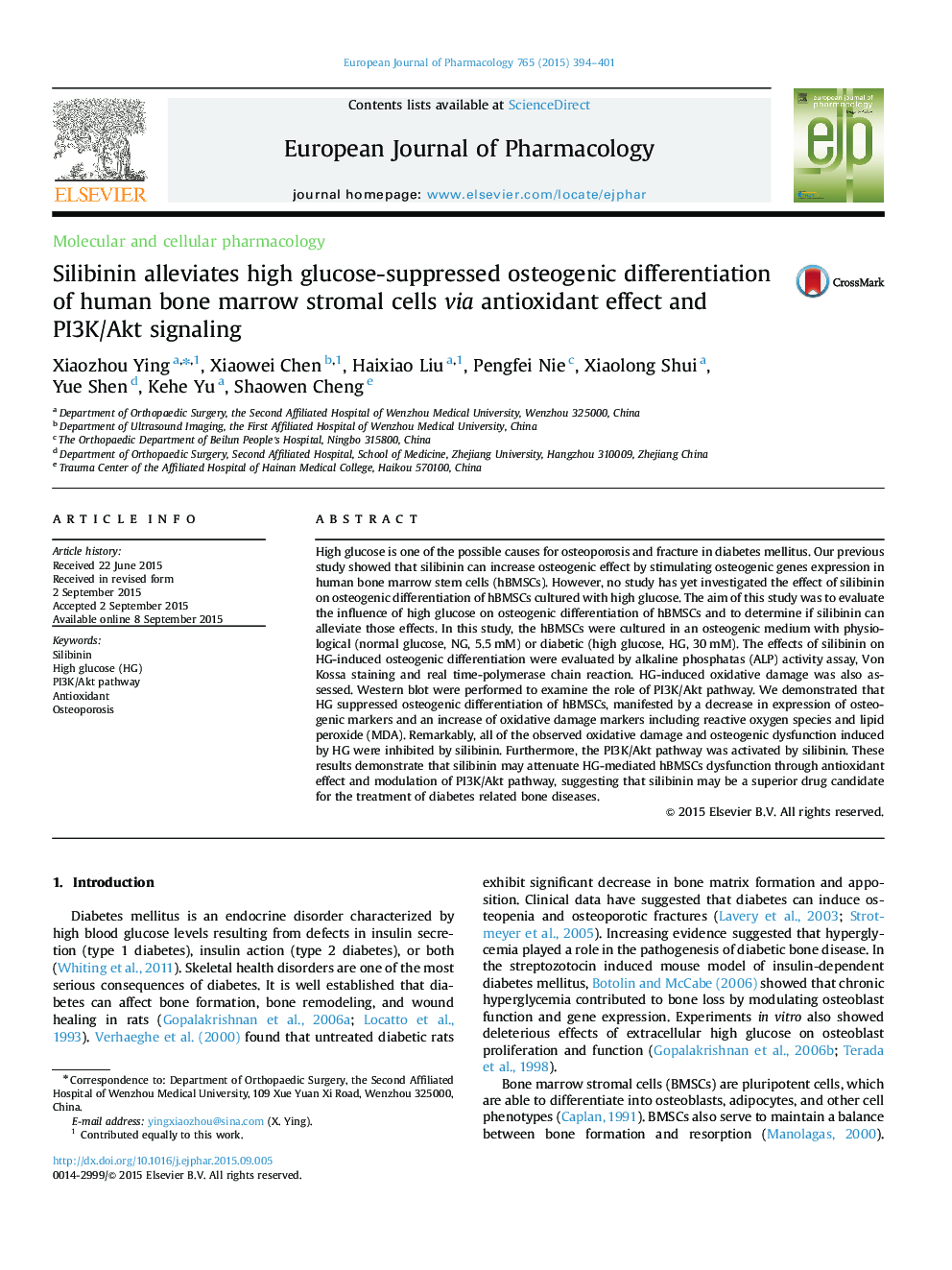| Article ID | Journal | Published Year | Pages | File Type |
|---|---|---|---|---|
| 5826879 | European Journal of Pharmacology | 2015 | 8 Pages |
Abstract
High glucose is one of the possible causes for osteoporosis and fracture in diabetes mellitus. Our previous study showed that silibinin can increase osteogenic effect by stimulating osteogenic genes expression in human bone marrow stem cells (hBMSCs). However, no study has yet investigated the effect of silibinin on osteogenic differentiation of hBMSCs cultured with high glucose. The aim of this study was to evaluate the influence of high glucose on osteogenic differentiation of hBMSCs and to determine if silibinin can alleviate those effects. In this study, the hBMSCs were cultured in an osteogenic medium with physiological (normal glucose, NG, 5.5Â mM) or diabetic (high glucose, HG, 30Â mM). The effects of silibinin on HG-induced osteogenic differentiation were evaluated by alkaline phosphatas (ALP) activity assay, Von Kossa staining and real time-polymerase chain reaction. HG-induced oxidative damage was also assessed. Western blot were performed to examine the role of PI3K/Akt pathway. We demonstrated that HG suppressed osteogenic differentiation of hBMSCs, manifested by a decrease in expression of osteogenic markers and an increase of oxidative damage markers including reactive oxygen species and lipid peroxide (MDA). Remarkably, all of the observed oxidative damage and osteogenic dysfunction induced by HG were inhibited by silibinin. Furthermore, the PI3K/Akt pathway was activated by silibinin. These results demonstrate that silibinin may attenuate HG-mediated hBMSCs dysfunction through antioxidant effect and modulation of PI3K/Akt pathway, suggesting that silibinin may be a superior drug candidate for the treatment of diabetes related bone diseases.
Related Topics
Life Sciences
Neuroscience
Cellular and Molecular Neuroscience
Authors
Xiaozhou Ying, Xiaowei Chen, Haixiao Liu, Pengfei Nie, Xiaolong Shui, Yue Shen, Kehe Yu, Shaowen Cheng,
